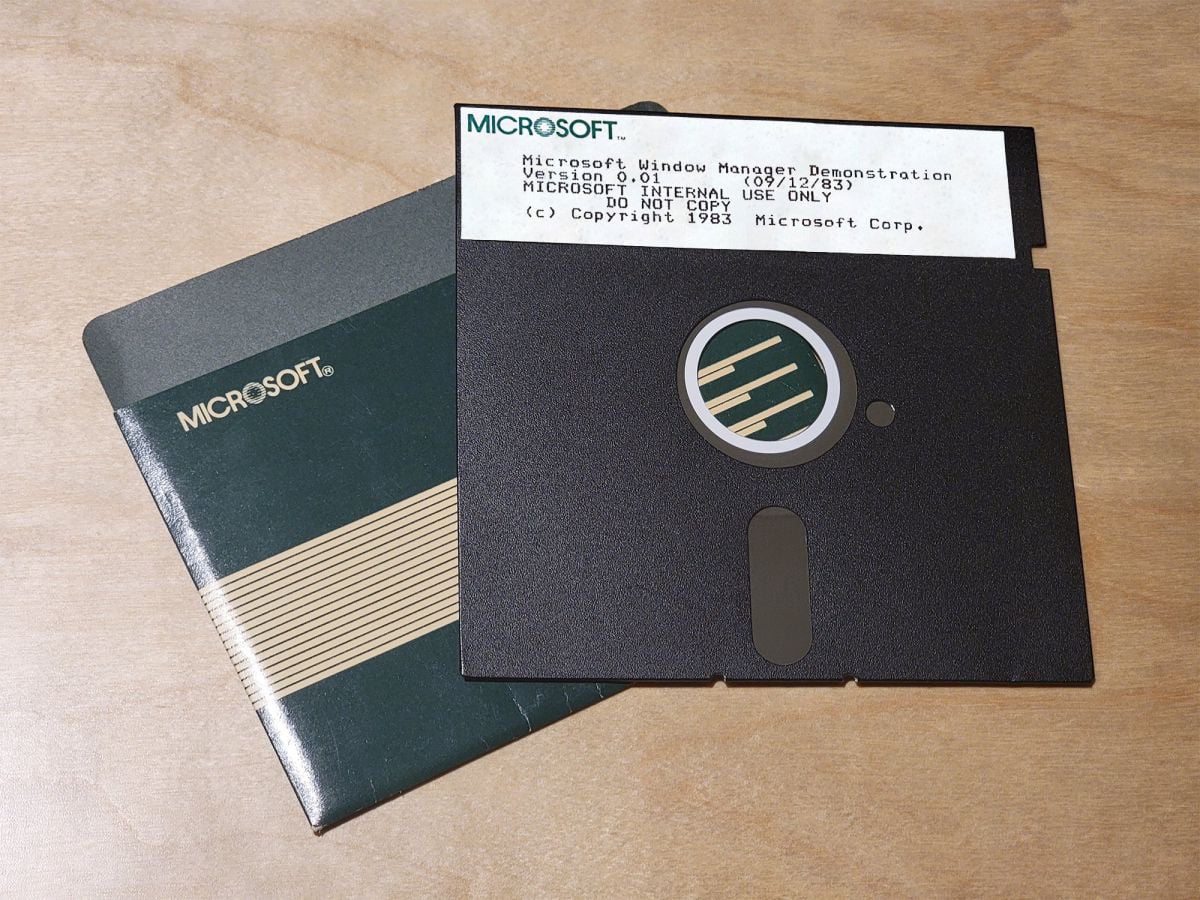Microsoft Windows Timeline
Witness the journey of Microsoft's iconic operating system, Windows, from its text-based origins to the sleek interfaces of today. Our interactive timeline showcases every major version, highlighting key features, release dates, and historical significance.
2021, October 5
Windows 11
Windows 11 is the latest release of Windows NT, and the successor to Windows 10. It was unveiled on June 24, 2021, and was released on October 5, serving as a free upgrade to compatible Windows 10 devices. The system incorporates a renewed interface called "Mica", which includes translucent backgrounds, rounded edges and color combinations. The taskbar's icons are center aligned by default, while the Start menu replaces the "Live Tiles" with pinned apps and recommended apps and files. The MSN widget panel, the Microsoft Store, and the file browser, among other applications, have also been redesigned. However, some features and programs such as Cortana, Internet Explorer (replaced by Microsoft Edge as the default web browser) and Paint 3D were removed. Apps like 3D Viewer, Paint 3D, Skype and OneNote for Windows 10 can be downloaded from the Microsoft Store. Windows 11 includes compatibility with Android applications; the Amazon Appstore is included in Windows Subsystem for Android. Windows 11 received a positive reception from critics. While it was praised for its redesigned interface, and increased security and productivity, it was criticized for its high system requirements (which includes an installed TPM 2.0 chip, enabling the Secure Boot protocol, and UEFI firmware) and various UI changes and regressions (such as requiring a Microsoft account for first-time setup, preventing users from changing default browsers, and inconsistent dark theme) compared to Windows 10.

2021, August 18
Windows Server 2022
Windows Server 2022 was released on August 18, 2021. This is the first NT server version which does not share the build number with any of its client version counterpart, although its codename is 21H2, similar to the Windows 10 November 2021 Update.
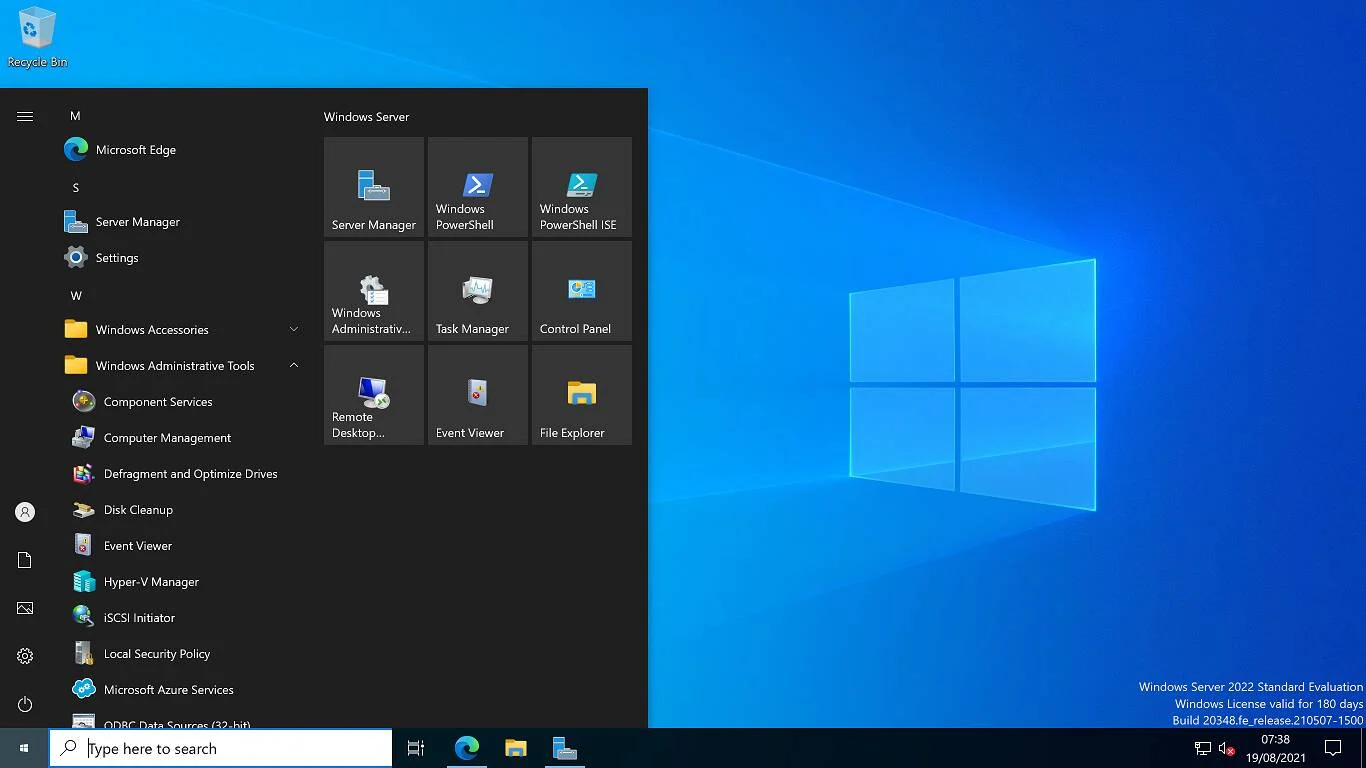
2018, October 2
Windows Server 2019
Windows Server 2019 is a release of the Microsoft Windows Server operating system that was announced on March 20, 2018. The first Windows Insider preview version was released on the same day. It was released for general availability on October 2, 2018. Windows Server 2019 is based on the Windows 10 October 2018 Update codebase.
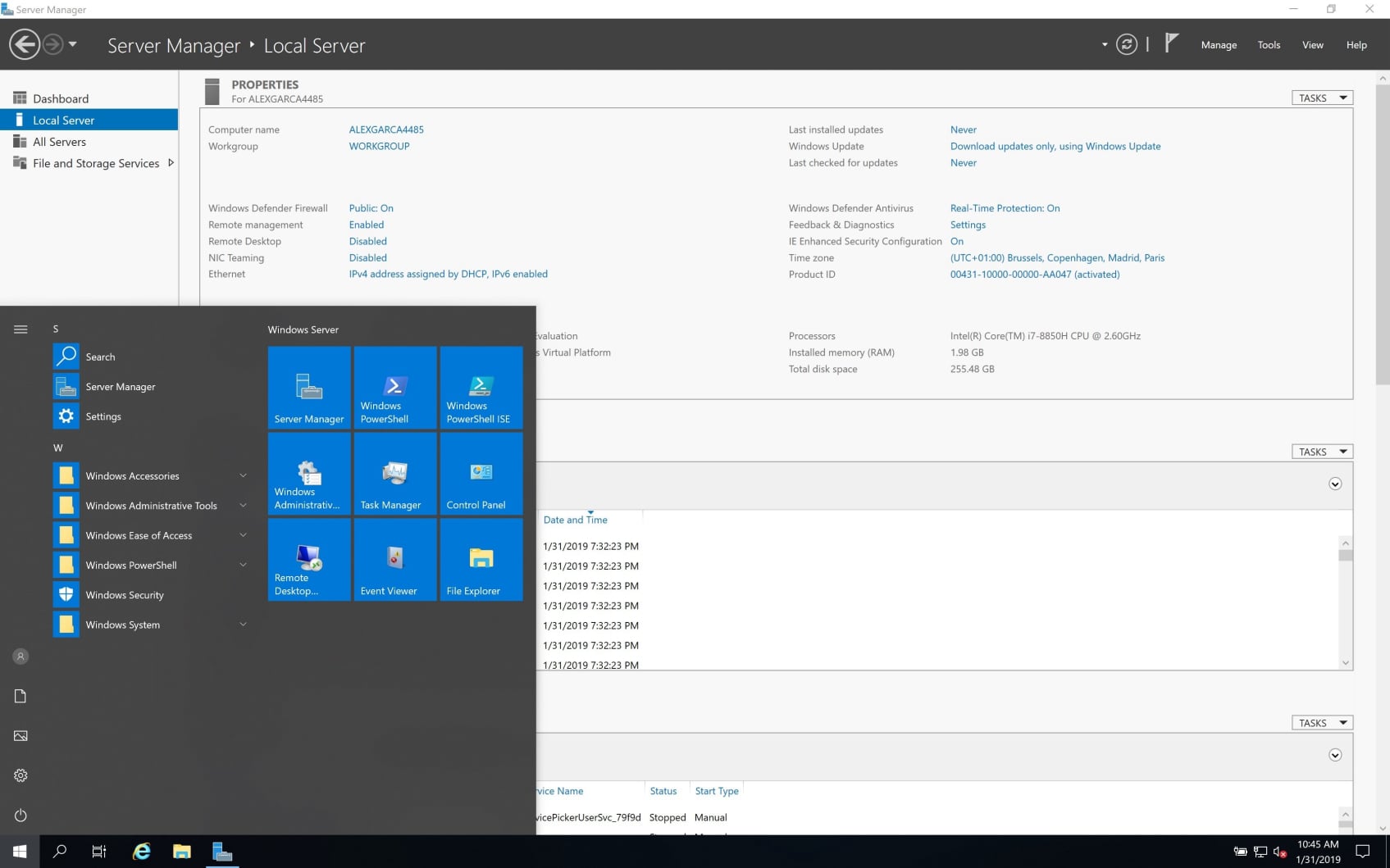
2016, September 26
Windows Server 2016
Windows Server 2016 is a release of the Microsoft Windows Server operating system that was unveiled on September 30, 2014. Windows Server 2016 was officially released at Microsoft's Ignite Conference, September 26–30, 2016. It is based on the Windows 10 Anniversary Update codebase.
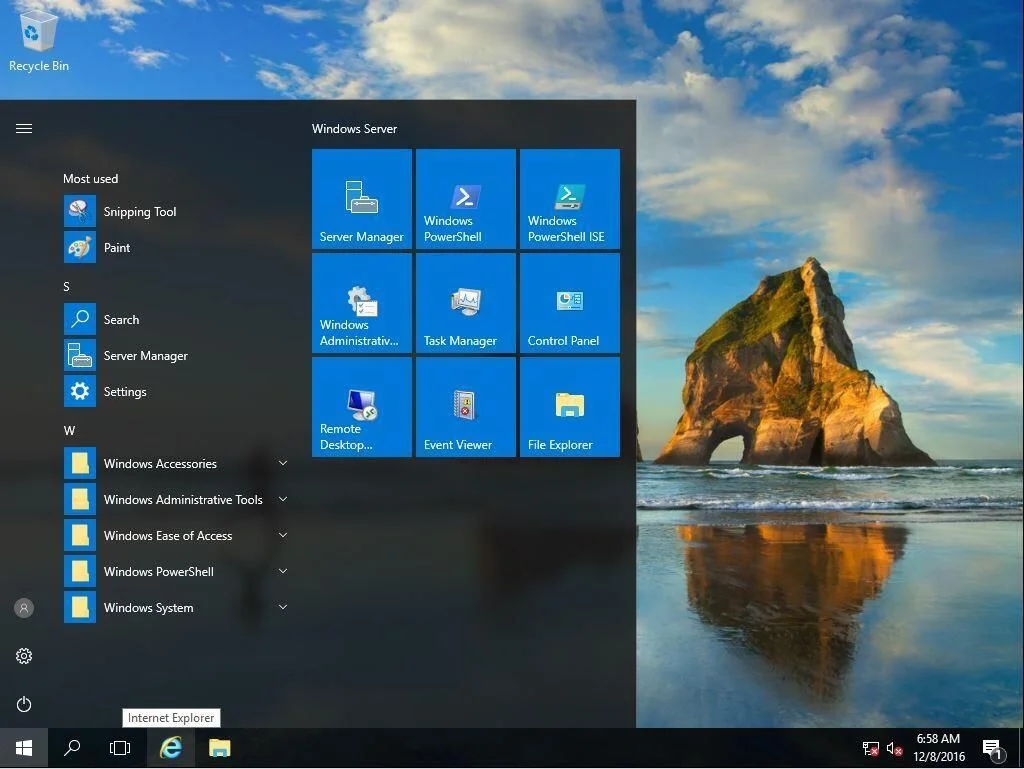
2015, July 29
Windows 10
Windows 10 was unveiled on September 30, 2014, as the successor for Windows 8, and was released on July 29, 2015. It was distributed without charge to Windows 7 and 8.1 users for one year after release. A number of new features like Cortana, the Microsoft Edge web browser, the ability to view Windows Store apps as a window instead of fullscreen, the return of the Start menu, virtual desktops, revamped core apps, Continuum, and a unified Settings app were all features debuted in Windows 10. Like its successor, the operating system was announced as a service OS that would receive constant performance and stability updates. Unlike Windows 8, Windows 10 received mostly positive reviews, praising improvements of stability and practicality than its predecessor, however, it received some criticism due to mandatory update installation, privacy concerns and advertising-supported software tactics.
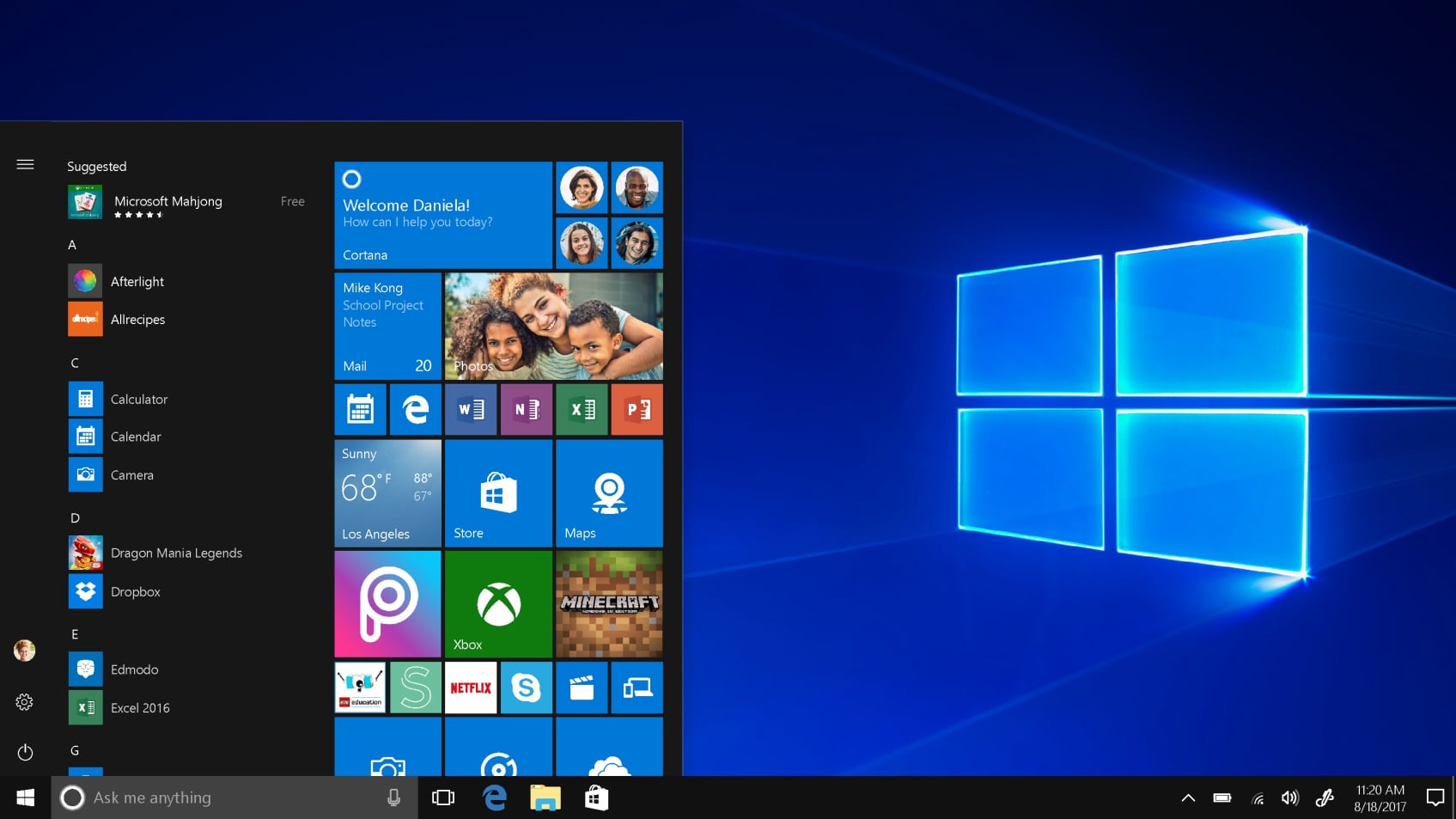
2013, October 17
Windows 8.1, Server 2012 R2
Windows 8.1 and Windows Server 2012 R2 were released on October 17, 2013. Windows 8.1 is available as an update in the Windows Store for Windows 8 users only and also available to download for clean installation. The update adds new options for resizing the live tiles on the Start screen. Windows 8 was given the kernel number NT 6.2, with its successor 8.1 receiving the kernel number 6.3. So far, neither has had any service packs yet, although many consider Windows 8.1 to be a service pack for Windows 8. However, Windows 8.1 received two main updates in 2014. Both versions received some criticism due to the removal of the Start menu and some difficulties to perform tasks and commands.
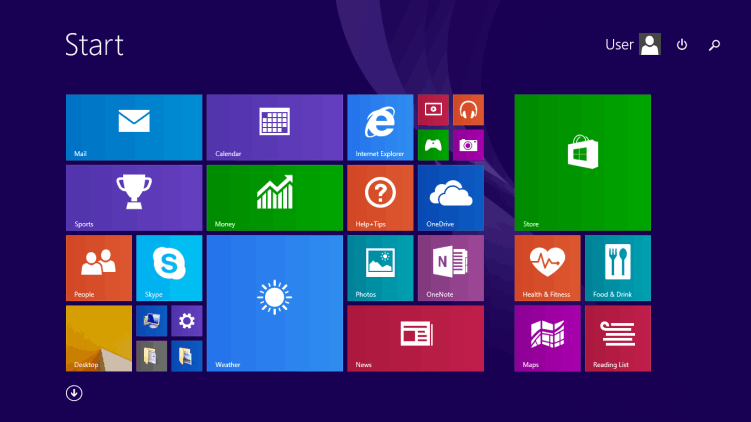
2012, May 31
Windows 8, Server 2012
On June 1, 2011, Microsoft previewed Windows 8 at both Computex Taipei and the D9: All Things Digital conference in California. The first public preview of Windows Server 2012 was shown by Microsoft at the 2011 Microsoft Worldwide Partner Conference. Windows 8 Release Preview and Windows Server 2012 Release Candidate were both released on May 31, 2012. Product development on Windows 8 was completed on August 1, 2012, and it was released to manufacturing the same day. Windows Server 2012 went on sale to the public on September 4, 2012. Windows 8 went on sale to the public on October 26, 2012. One edition, Windows RT, runs on some system-on-a-chip devices with mobile 32-bit ARM (ARMv7) processors. Windows 8 features a redesigned user interface, designed to make it easier for touchscreen users to use Windows. The interface introduced an updated Start menu known as the Start screen, and a new full-screen application platform. The desktop interface is also present for running windowed applications, although Windows RT will not run any desktop applications not included in the system. On the Building Windows 8 blog, it was announced that a computer running Windows 8 can boot up much faster than Windows 7. New features also include USB 3.0 support, the Windows Store, the ability to run from USB drives with Windows To Go, and others.
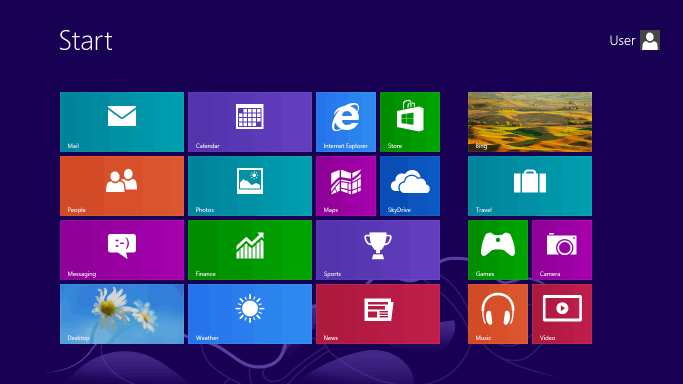
2011, June 6
Windows Thin PC
In 2011, Microsoft released Windows Thin PC or WinTPC, which was a feature-and size-reduced locked-down version of Windows 7 expressly designed to turn older PCs into thin clients. WinTPC was available for software assurance customers and relied on cloud computing in a business network. Wireless operation is supported since WinTPC has full wireless stack integration, but wireless operation may not be as good as the operation on a wired connection.

2011, April 6
Windows Home Server 2011
Windows Home Server 2011 code named 'Vail' was released on April 6, 2011. Windows Home Server 2011 is built on the Windows Server 2008 R2 code base and removed the Drive Extender drive pooling technology in the original Windows Home Server release. Windows Home Server 2011 is considered a "major release". Its predecessor was built on Windows Server 2003. WHS 2011 only supports x86-64 hardware.
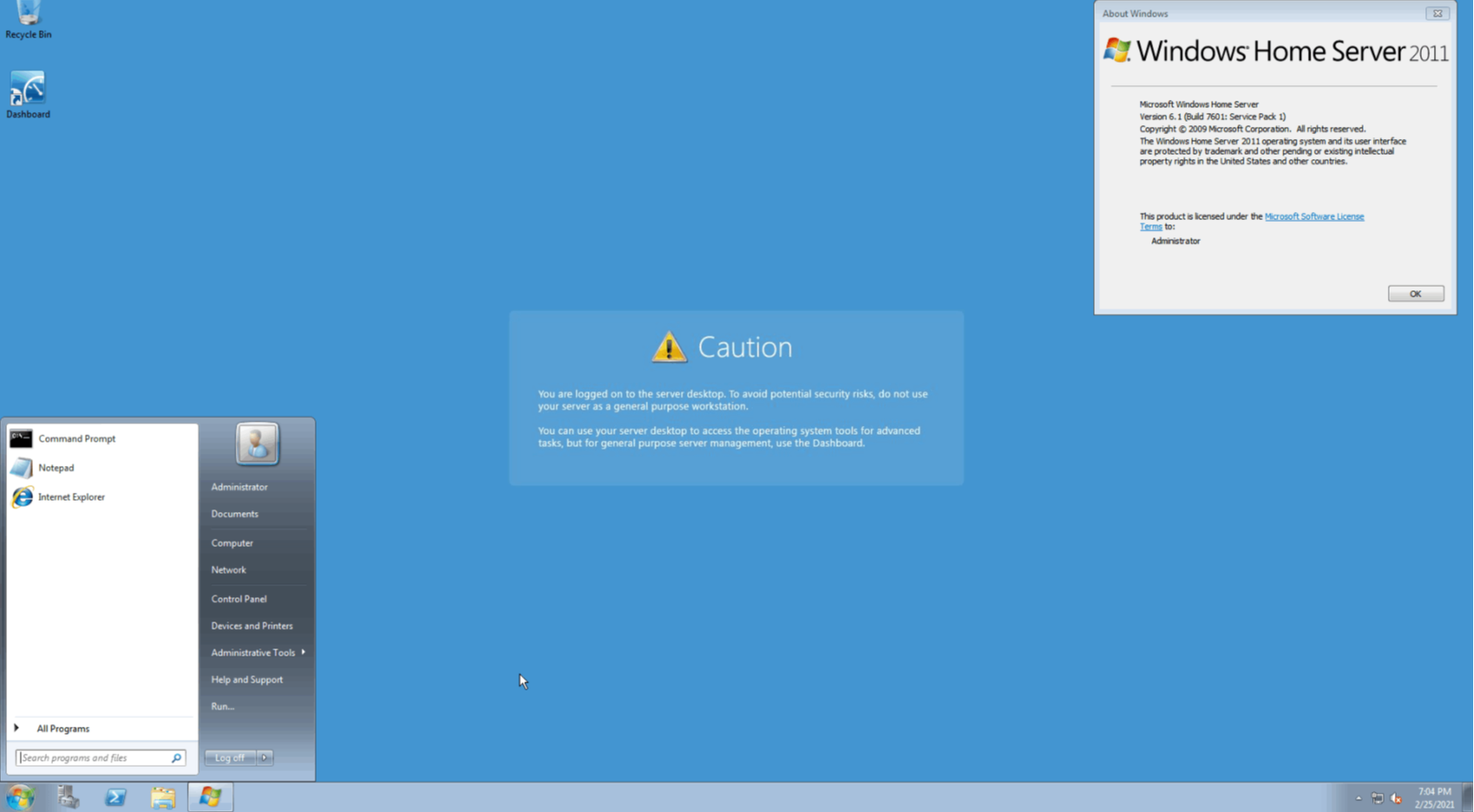
2009, October 22
Windows Server 2008 R2
Windows Server 2008 R2, codenamed "Windows Server 7", is the fifth version of the Windows Server operating system produced by Microsoft and released as part of the Windows NT family of operating systems. It was released to manufacturing on July 22, 2009, and became generally available on October 22, 2009, shortly after the completion of Windows 7. It is the successor to Windows Server 2008, which is derived from the Windows Vista codebase, released the previous year, and was succeeded by the Windows 8-based Windows Server 2012.
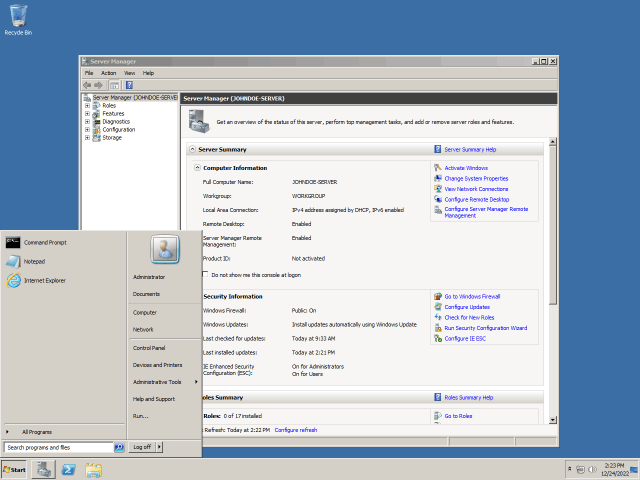
2009, October 22
Windows 7
Windows 7 is a major release of the Windows NT operating system developed by Microsoft. It was released to manufacturing on July 22, 2009, and became generally available on October 22, 2009. It is the successor to Windows Vista, released nearly three years earlier. Windows 7's server counterpart, Windows Server 2008 R2, was released at the same time. Windows 7 remained an operating system for use on personal computers, including home and business desktops, laptops, tablet PCs and media center PCs, and itself was replaced in November 2012 by Windows 8, the name spanning more than three years of the product.

2008, February 27
Windows Server 2008
Windows Server 2008, codenamed "Longhorn Server", is the fourth release of the Windows Server operating system produced by Microsoft as part of the Windows NT family of the operating systems. It was released to manufacturing on February 4, 2008, and generally to retail on February 27, 2008. Derived from Windows Vista, Windows Server 2008 is the successor of Windows Server 2003 and the predecessor to Windows Server 2008 R2.
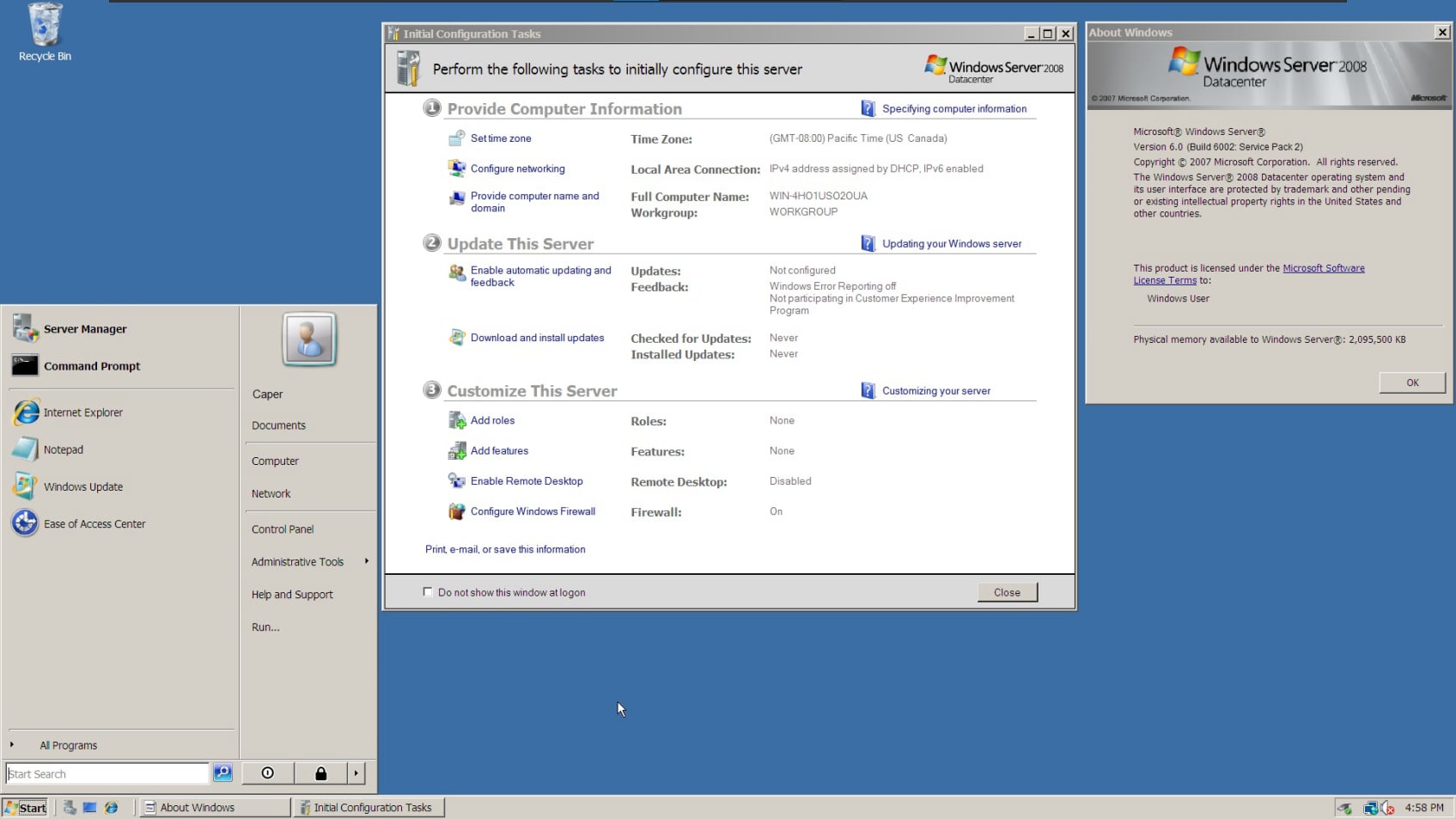
2007, November 4
Windows Home Server 2007
Windows Home Server (code-named Q, Quattro) is a server product based on Windows Server 2003, designed for consumer use. The system was announced on January 7, 2007, by Bill Gates. Windows Home Server can be configured and monitored using a console program that can be installed on a client PC. Such features as Media Sharing, local and remote drive backup and file duplication are all listed as features. The release of Windows Home Server Power Pack 3 added support for Windows 7 to Windows Home Server.
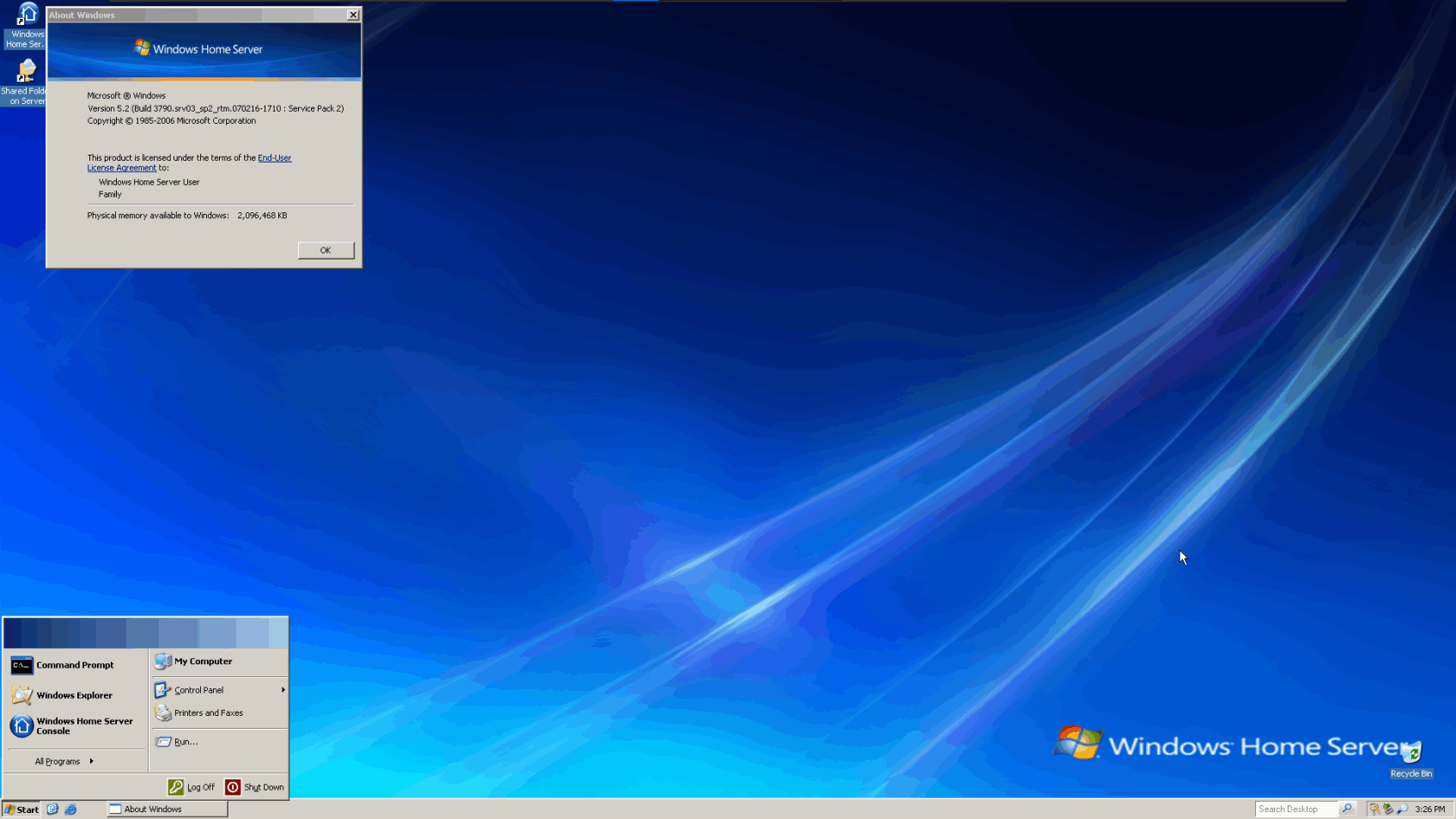
2006, November 30
Windows Vista
Windows Vista was released on November 30, 2006, to business customers—consumer versions followed on January 30, 2007. Windows Vista intended to have enhanced security by introducing a new restricted user mode called User Account Control, replacing the "administrator-by-default" philosophy of Windows XP. Vista was the target of much criticism and negative press, and in general was not well regarded, this was seen as leading to the relatively swift release of Windows 7.
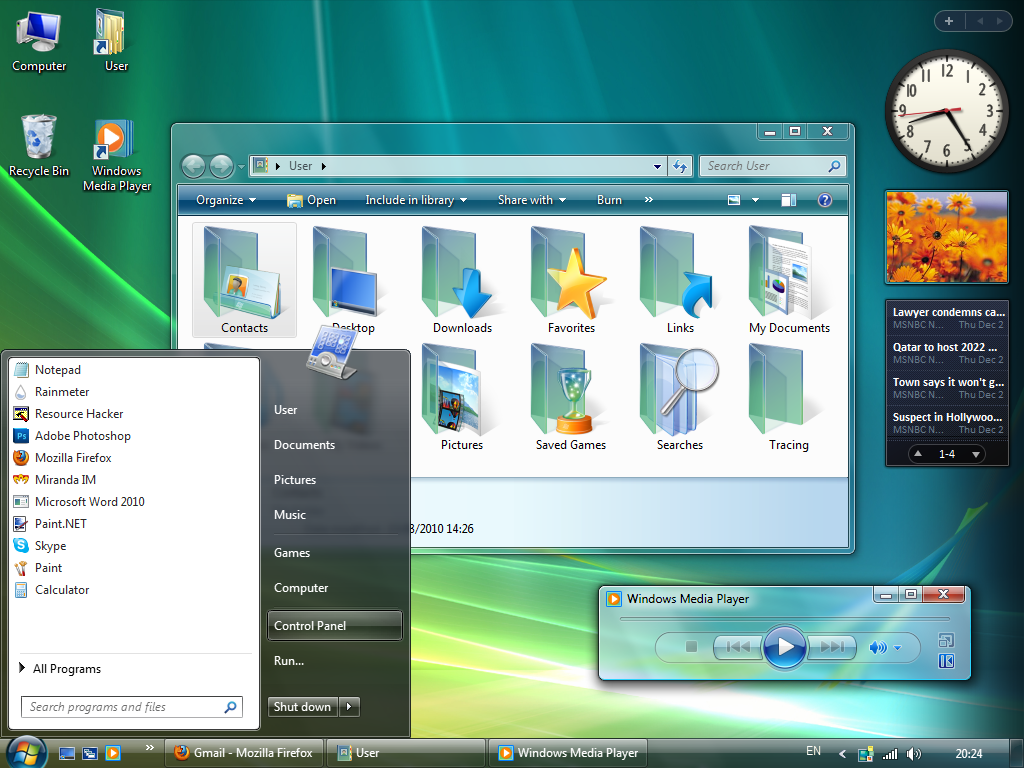
2006, July 8
Windows Fundamentals for Legacy PCs
In July 2006, Microsoft released a thin-client version of Windows XP Service Pack 2, called Windows Fundamentals for Legacy PCs (WinFLP). It is only available to Software Assurance customers. The aim of WinFLP is to give companies a viable upgrade option for older PCs that are running Windows 95, 98, and Me that will be supported with patches and updates for the next several years. Most user applications will typically be run on a remote machine using Terminal Services or Citrix.
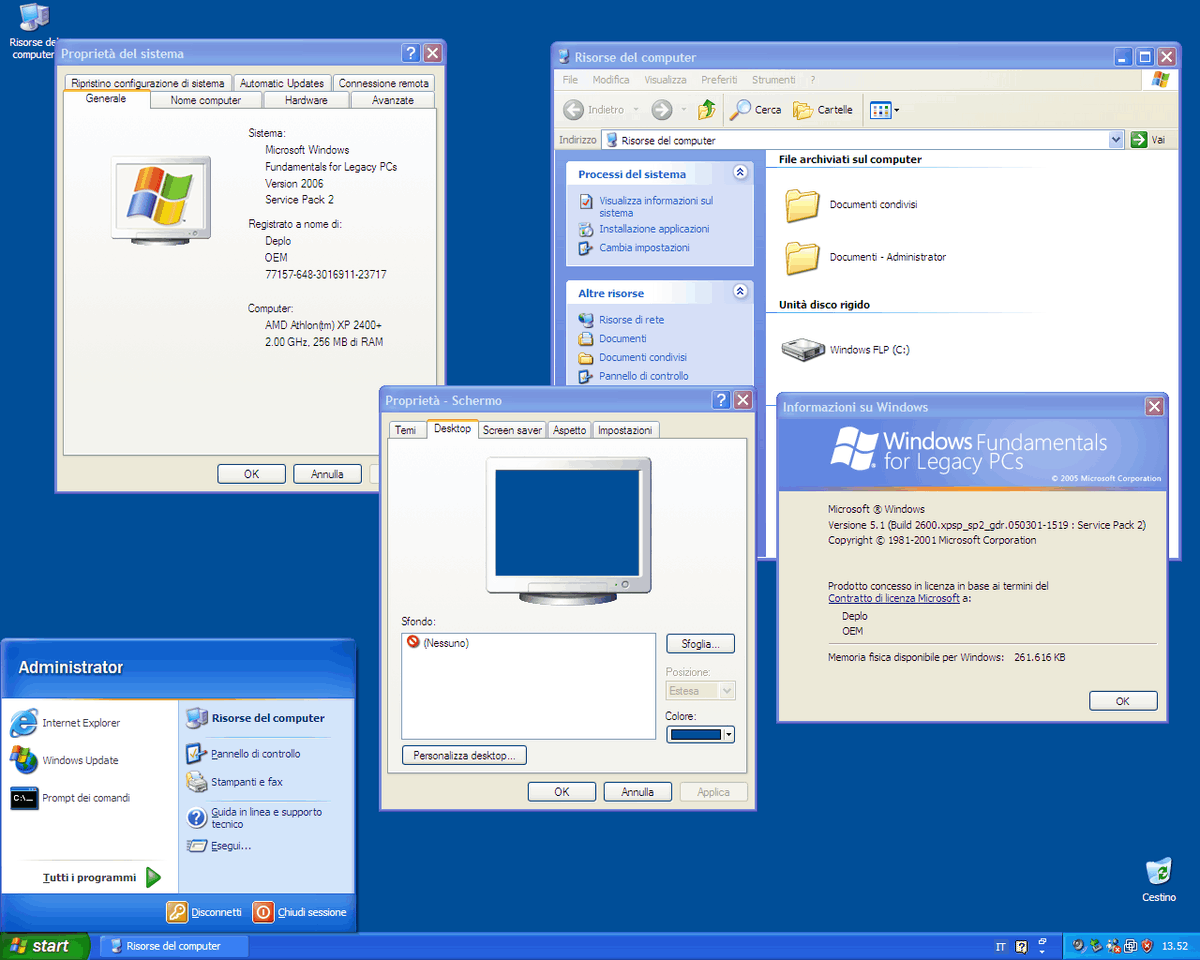
2005, April 25
Windows Server 2003 x64 Editions
On April 25, 2005, Microsoft released Windows Server 2003, x64 Editions in Standard, Enterprise and Datacenter SKUs.
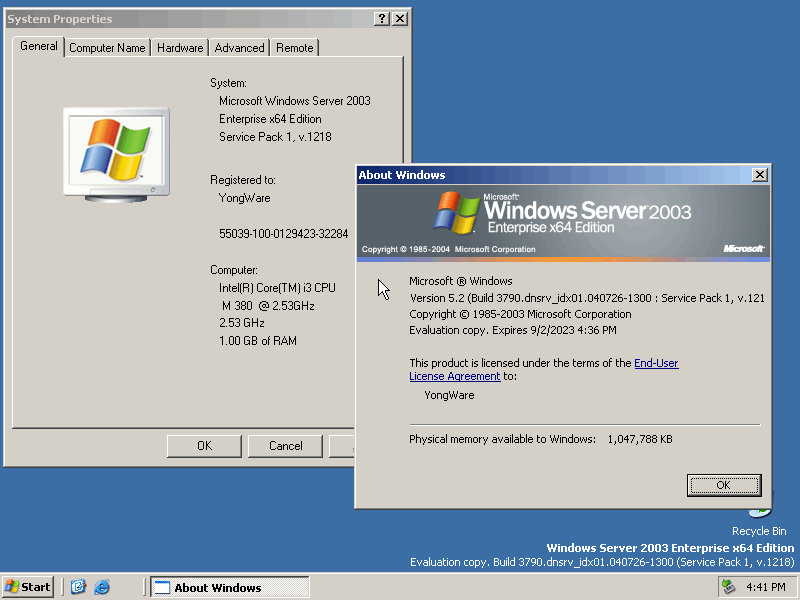
2005, April 25
Windows XP Professional x64 Edition
Microsoft Windows XP Professional x64 Edition, released on April 25, 2005, is an edition of Windows XP for x86-64 personal computers. It is designed to use the expanded 64-bit memory address space provided by the x86-64 architecture.
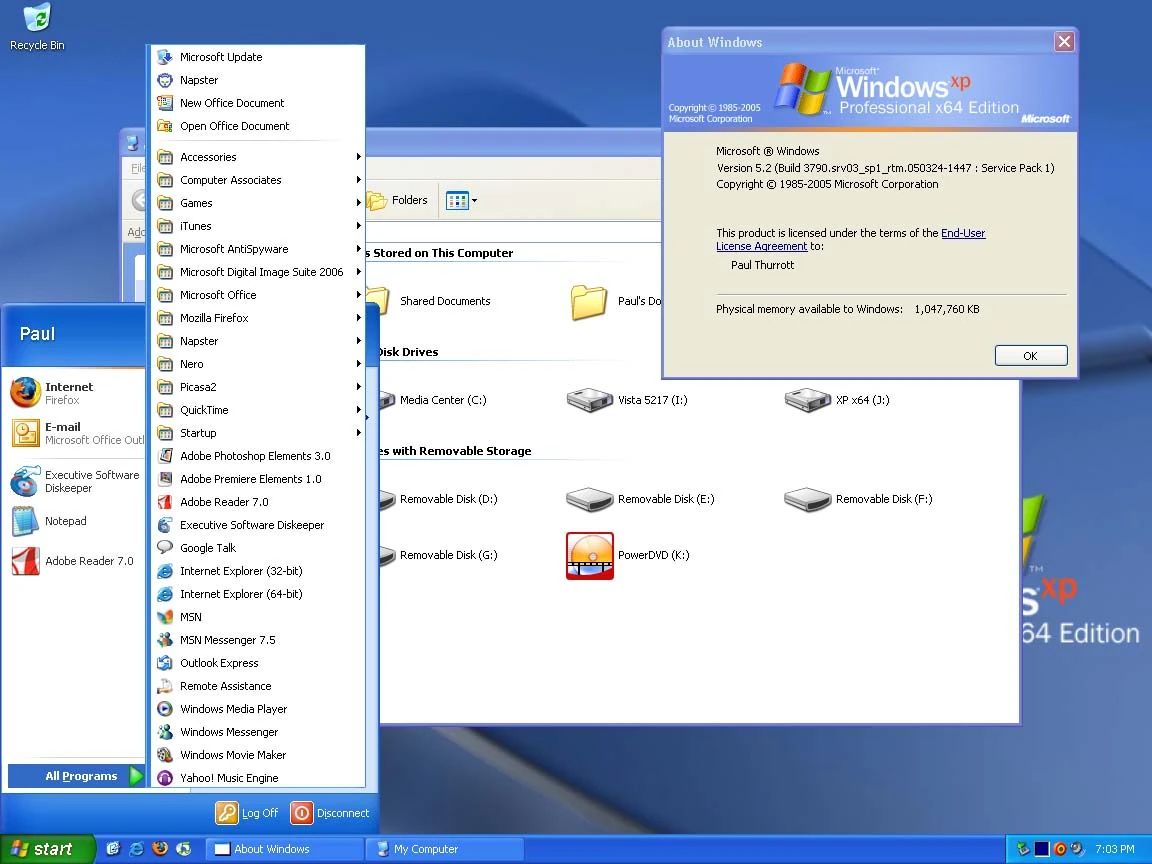
2003, April 25
Windows Server 2003
On April 25, 2003, Microsoft launched Windows Server 2003, a notable update to Windows 2000 Server encompassing many new security features, a new "Manage Your Server" wizard that simplifies configuring a machine for specific roles, and improved performance. It is based on the Windows NT 5.2 kernel. A few services not essential for server environments are disabled by default for stability reasons, most noticeable are the "Windows Audio" and "Themes" services; users have to enable them manually to get sound or the "Luna" look as per Windows XP. The hardware acceleration for display is also turned off by default, users have to turn the acceleration level up themselves if they trust the display card driver.
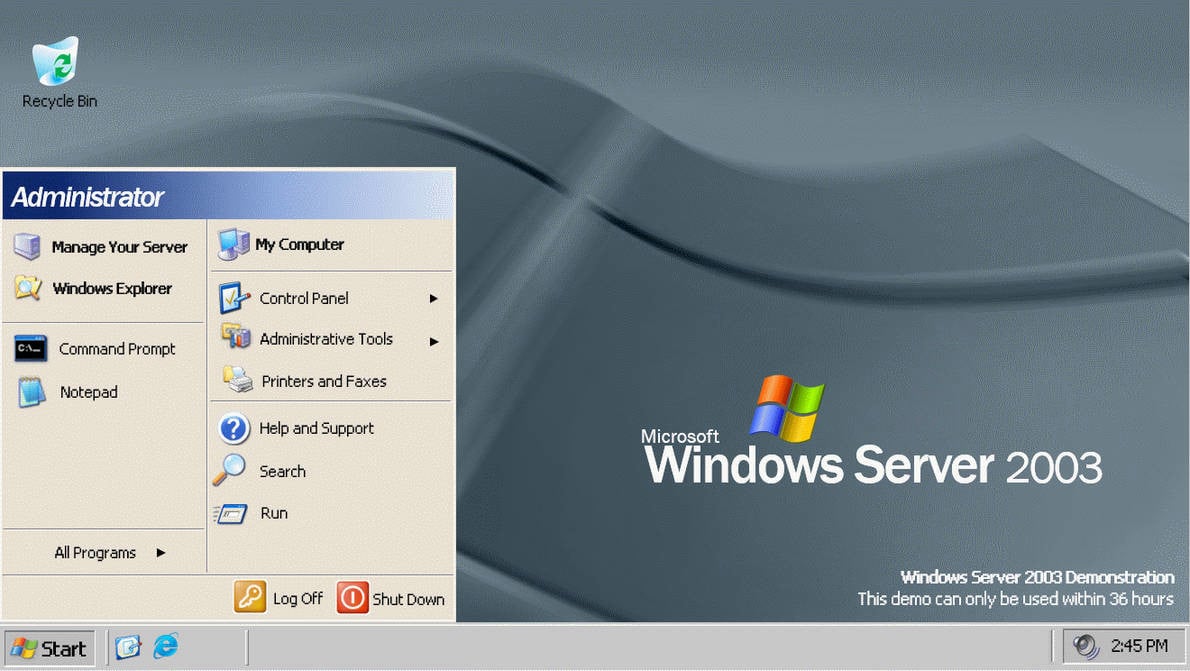
2001, October 25
Windows XP
On October 25, 2001, Microsoft released Windows XP (codenamed "Whistler"). The merging of the Windows NT/2000 and Windows 95/98/Me lines was finally achieved with Windows XP. Windows XP uses the Windows NT 5.1 kernel, marking the entrance of the Windows NT core to the consumer market, to replace the aging Windows 9x branch. The initial release was met with considerable criticism, particularly in the area of security, leading to the release of three major Service Packs. Windows XP SP1 was released in September 2002, SP2 was released in August 2004 and SP3 was released in April 2008. Service Pack 2 provided significant improvements and encouraged widespread adoption of XP among both home and business users. Windows XP was one of Microsoft's longest-running flagship operating systems, beginning with the public release on October 25, 2001, for at least 5 years, and ending on January 30, 2007, when it was succeeded by Windows Vista.
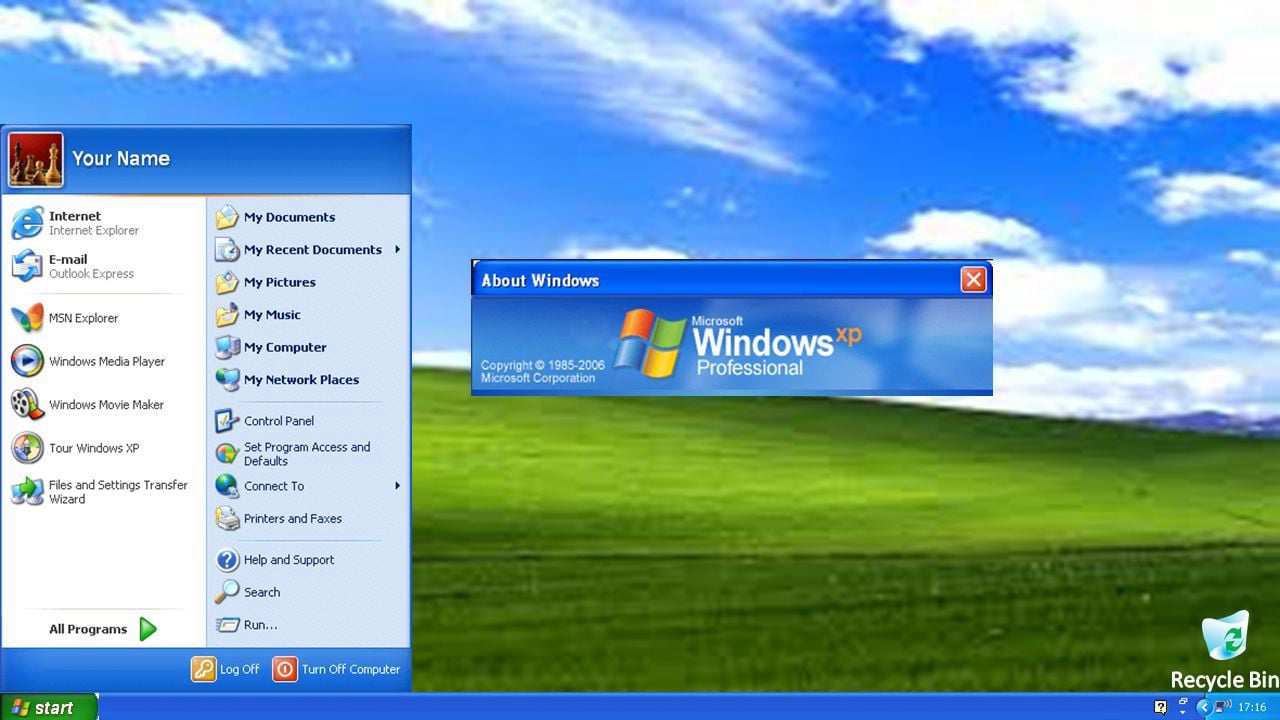
2000, September 14
Windows Me
On September 14, 2000, Microsoft released a successor to Windows 98 called Windows Me, short for "Millennium Edition". It was the last DOS-based operating system from Microsoft. Windows Me introduced a new multimedia-editing application called Windows Movie Maker, came standard with Internet Explorer 5.5 and Windows Media Player 7, and debuted the first version of System Restore – a recovery utility that enables the operating system to revert system files back to a prior date and time. System Restore was a notable feature that would continue to thrive in all later versions of Windows.
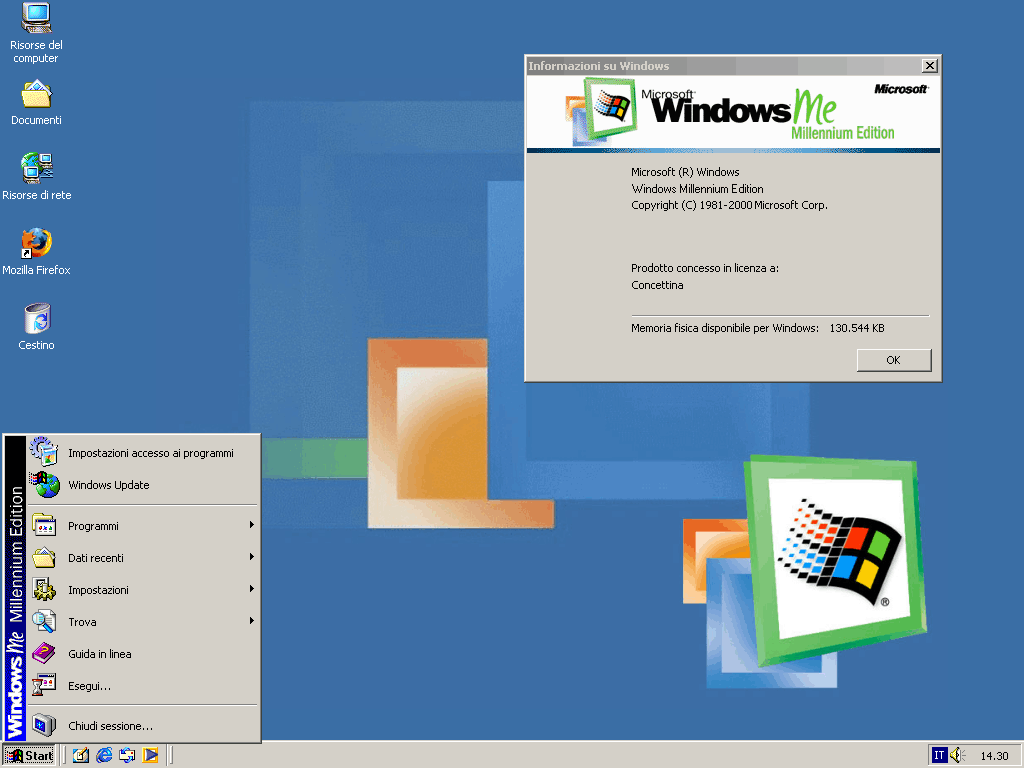
2000, February 17
Windows 2000
Microsoft released Windows 2000 on February 17, 2000, as the successor to Windows NT 4.0, 17 months after the release of Windows 98. It has the version number Windows NT 5.0, and it was Microsoft's business-oriented operating system starting with the official release on February 17, 2000, until 2001 when it was succeeded by Windows XP. Windows 2000 has had four official service packs. It was successfully deployed both on the server and the workstation markets. Amongst Windows 2000's most significant new features was Active Directory, a near-complete replacement of the NT 4.0 Windows Server domain model, which built on industry-standard technologies like DNS, LDAP, and Kerberos to connect machines to one another. Terminal Services, previously only available as a separate edition of NT 4, was expanded to all server versions. A number of features from Windows 98 were incorporated also, such as an improved Device Manager, Windows Media Player, and a revised DirectX that made it possible for the first time for many modern games to work on the NT kernel. Windows 2000 is also the last NT-kernel Windows operating system to lack product activation.
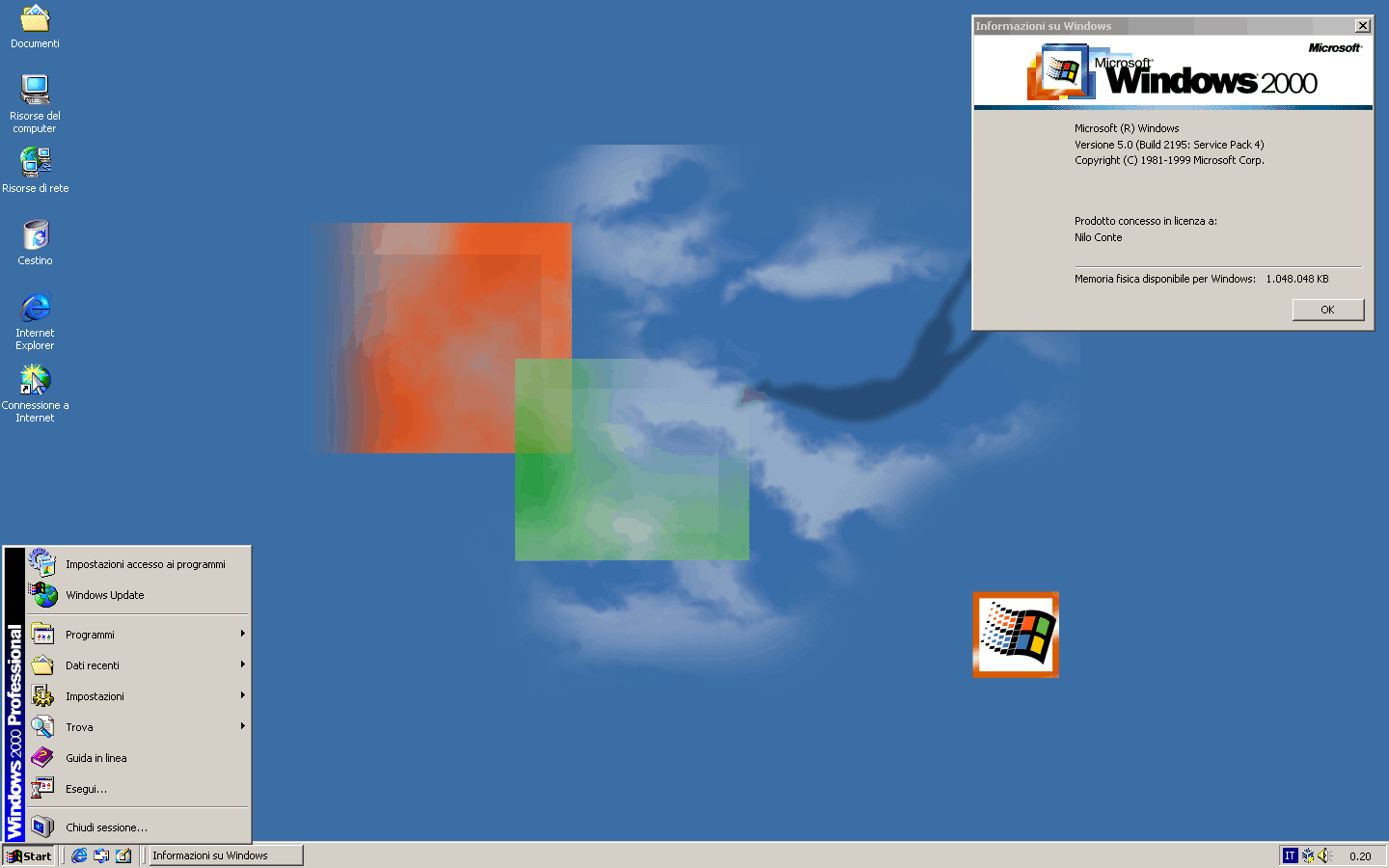
1998, June 25
Windows 98
On June 25, 1998, Microsoft released Windows 98 (code-named Memphis), three years after the release of Windows 95, two years after the release of Windows NT 4.0, and 21 months before the release of Windows 2000. It included new hardware drivers and the FAT32 file system which supports disk partitions that are larger than 2 GB (first introduced in Windows 95 OSR2). USB support in Windows 98 is marketed as a vast improvement over Windows 95. The release continued the controversial inclusion of the Internet Explorer browser with the operating system that started with Windows 95 OEM Service Release 1. The action eventually led to the filing of the United States v. Microsoft case, dealing with the question of whether Microsoft was introducing unfair practices into the market in an effort to eliminate competition from other companies such as Netscape.
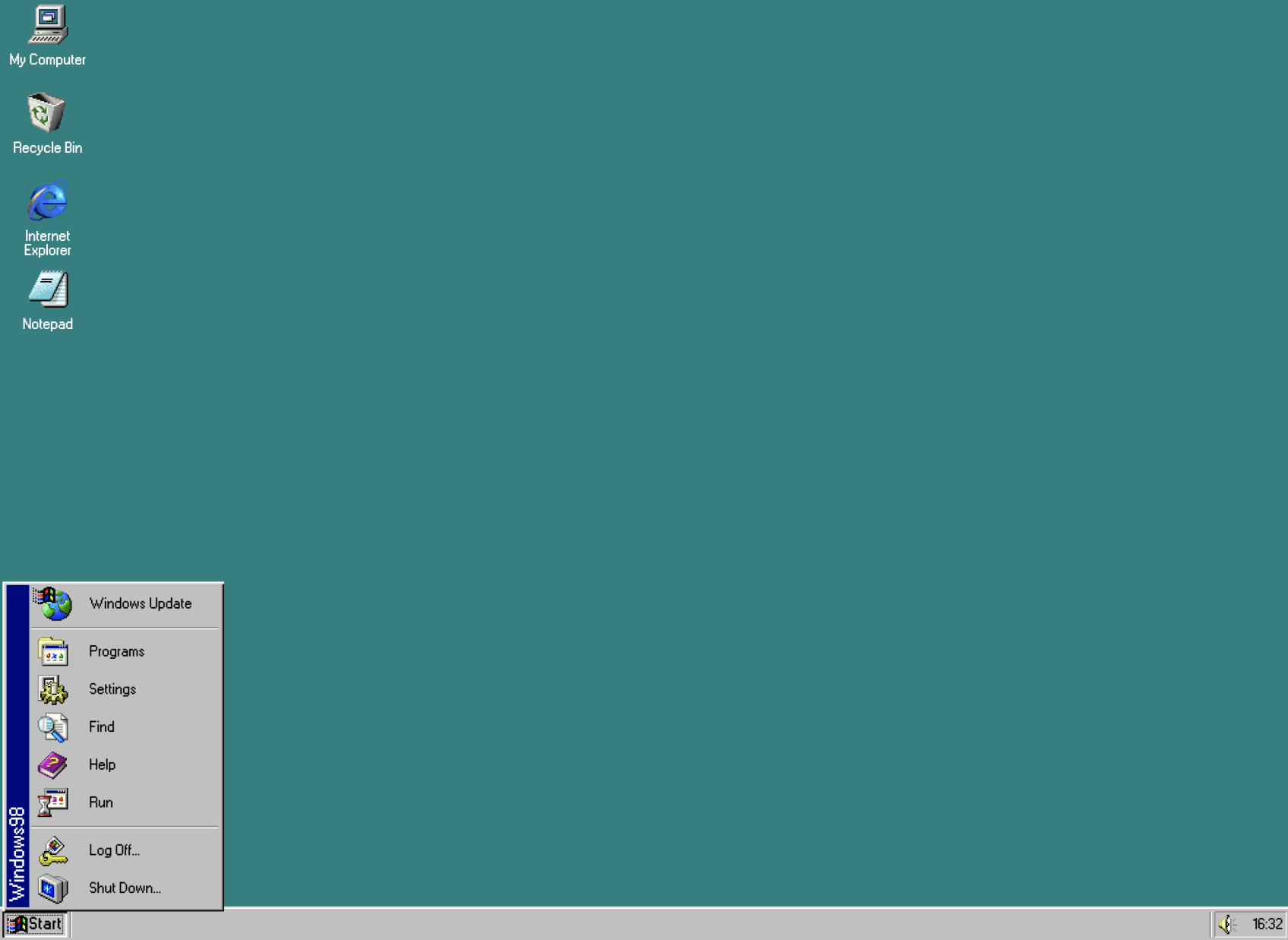
1996, August 24
Windows NT 4.0
Microsoft released the successor to NT 3.51, Windows NT 4.0, on August 24, 1996, one year after the release of Windows 95. It was Microsoft's primary business-oriented operating system until the introduction of Windows 2000. Major new features included the new Explorer shell from Windows 95, scalability and feature improvements to the core architecture, kernel, USER32, COM and MSRPC.
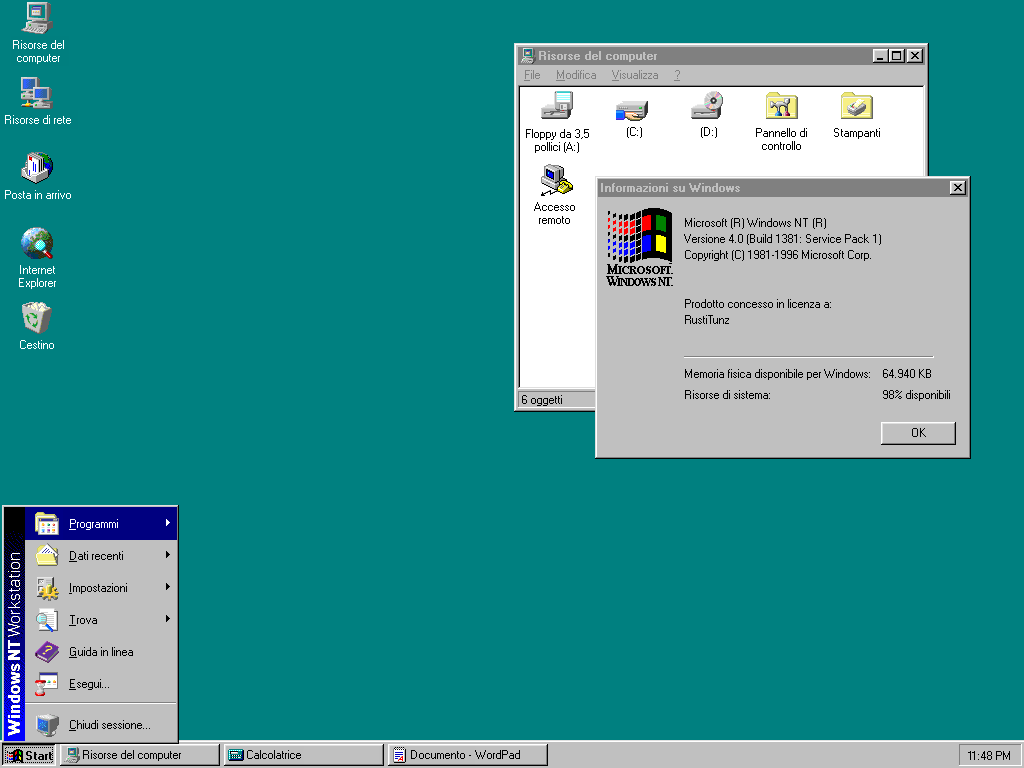
1995, August 24
Windows 95
Windows 95 is a consumer-oriented operating system developed by Microsoft as part of its Windows 9x family of operating systems. The first operating system in the 9x family, it is the successor to Windows 3.1, and was released to manufacturing on July 14, 1995, and generally to retail on August 24, 1995, almost three months after the release of Windows NT 3.51. Windows 95 is the first version of Microsoft Windows to include the start button. Windows 95 merged Microsoft's formerly separate MS-DOS and Microsoft Windows products, and featured significant improvements over its predecessor, most notably in the graphical user interface (GUI) and in its simplified "plug-and-play" features. There were also major changes made to the core components of the operating system, such as moving from a mainly cooperatively multitasked 16-bit architecture to a 32-bit preemptive multitasking architecture, at least when running only 32-bit protected mode applications.
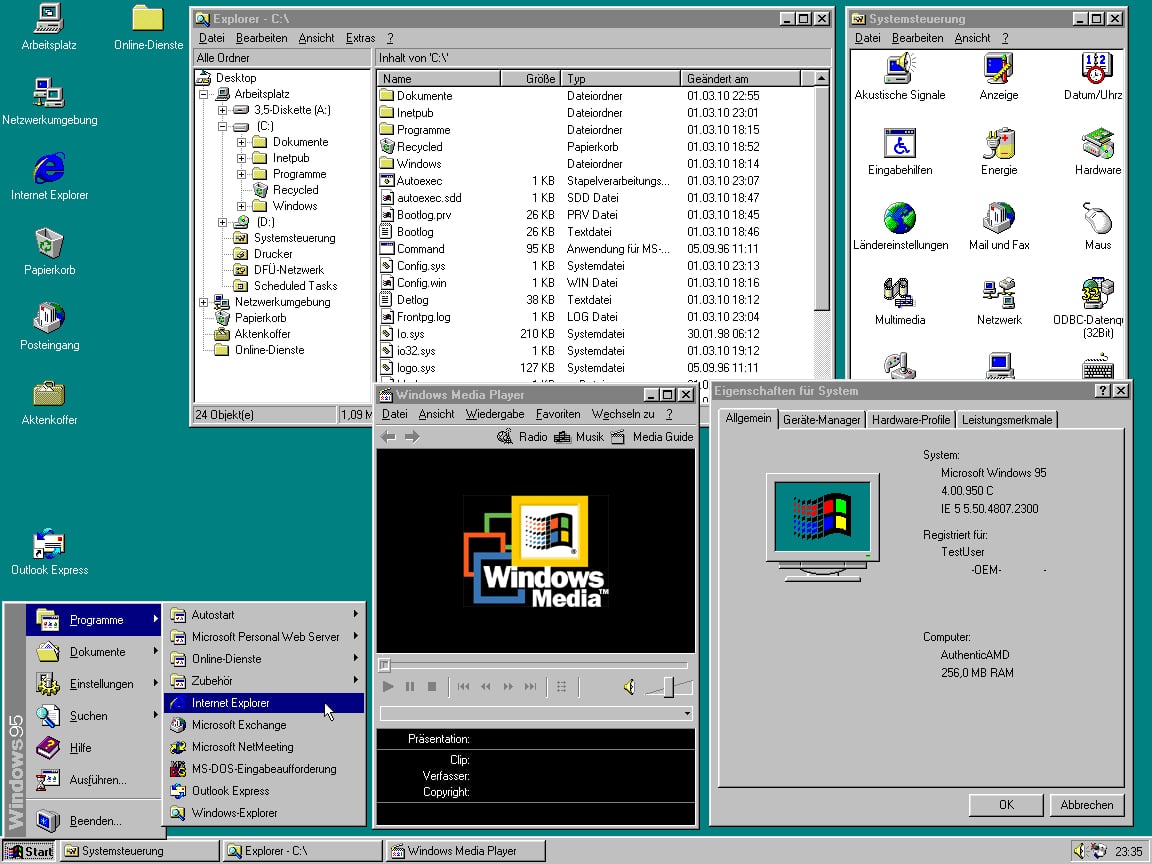
1993, July 27
Windows NT 3.x
Windows NT 3.1 is the first major release of the Windows NT operating system developed by Microsoft, released on July 27, 1993.
Windows NT 3.5 is a major release of the Windows NT operating system developed by Microsoft and oriented towards businesses. It was released on September 21, 1994, as the successor to Windows NT 3.1 and the predecessor to Windows NT 3.51.
Windows NT 3.51 is a major release of the Windows NT operating system developed by Microsoft and oriented towards businesses. It is the third version of Windows NT and was released on May 30, 1995, eight months following the release of Windows NT 3.5. The most significant enhancement offered in this release was that it provides client/server support for inter-operating with Windows 95, which was released almost three months after NT 3.51. Windows NT 4.0 became its successor a year later. Mainstream support for Windows NT 3.51 Workstation ended on December 31, 2000, and extended support ended on December 31, 2001, while Windows NT 3.51 Server mainstream support ended on September 30, 2000, followed by extended support on September 30, 2002. Both editions were succeeded by Windows NT 4.0 Workstation and Windows NT 4.0 Server, respectively.
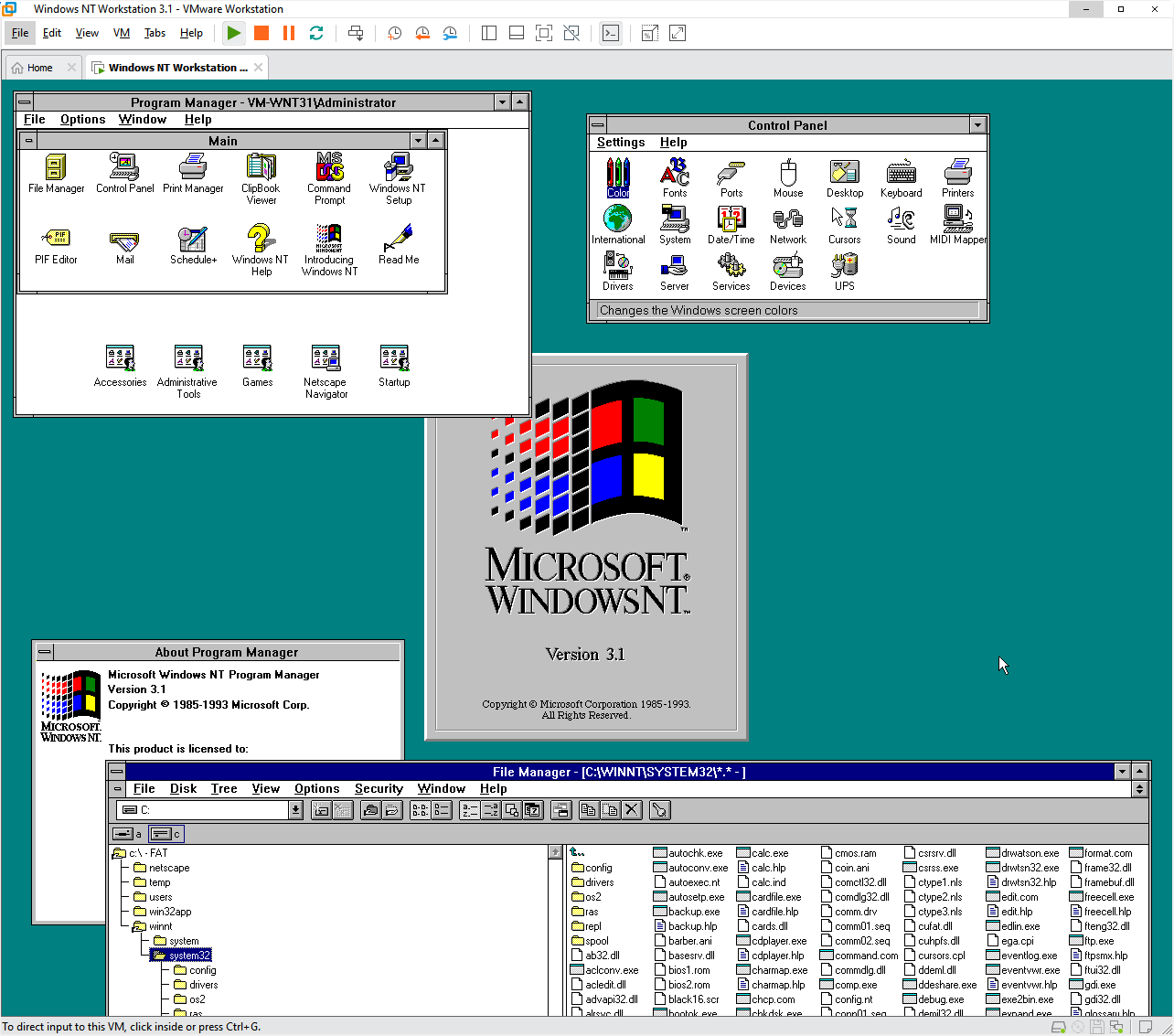
1992, April 6
Windows 3.1x
In response to the impending release of OS/2 2.0, Microsoft developed Windows 3.1 (first released in April 1992), which included several improvements to Windows 3.0, such as display of TrueType scalable fonts (developed jointly with Apple), improved disk performance in 386 Enhanced Mode, multimedia support, and bugfixes. It also removed Real Mode, and only ran on an 80286 or better processor. Later Microsoft also released Windows 3.11, a touch-up to Windows 3.1 which included all of the patches and updates that followed the release of Windows 3.1 in 1992.
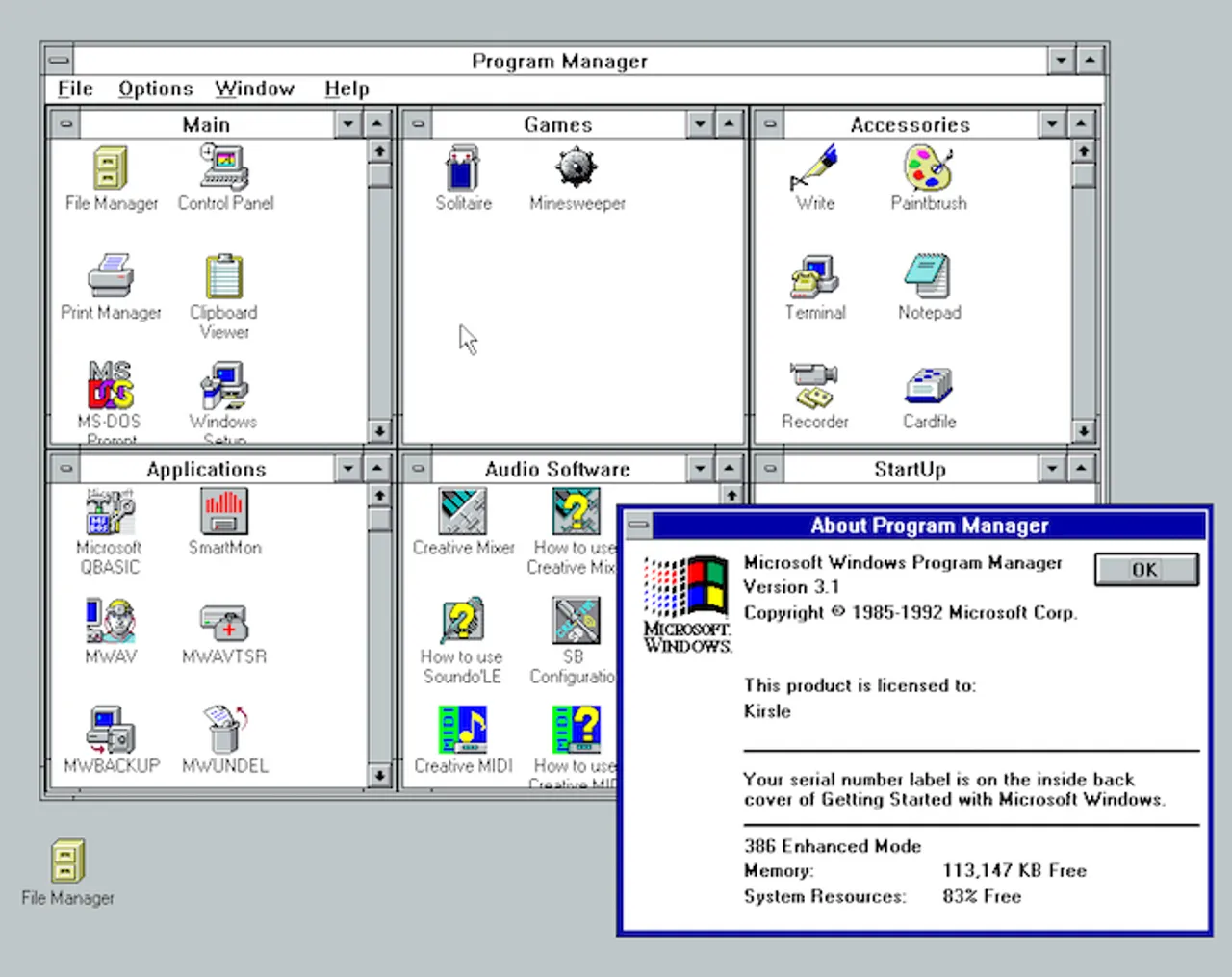
1990, May 22
Windows 3.0
Windows 3.0, released in May 1990, improved capabilities given to native applications. It also allowed users to better multitask older MS-DOS based software compared to Windows/386, thanks to the introduction of virtual memory.
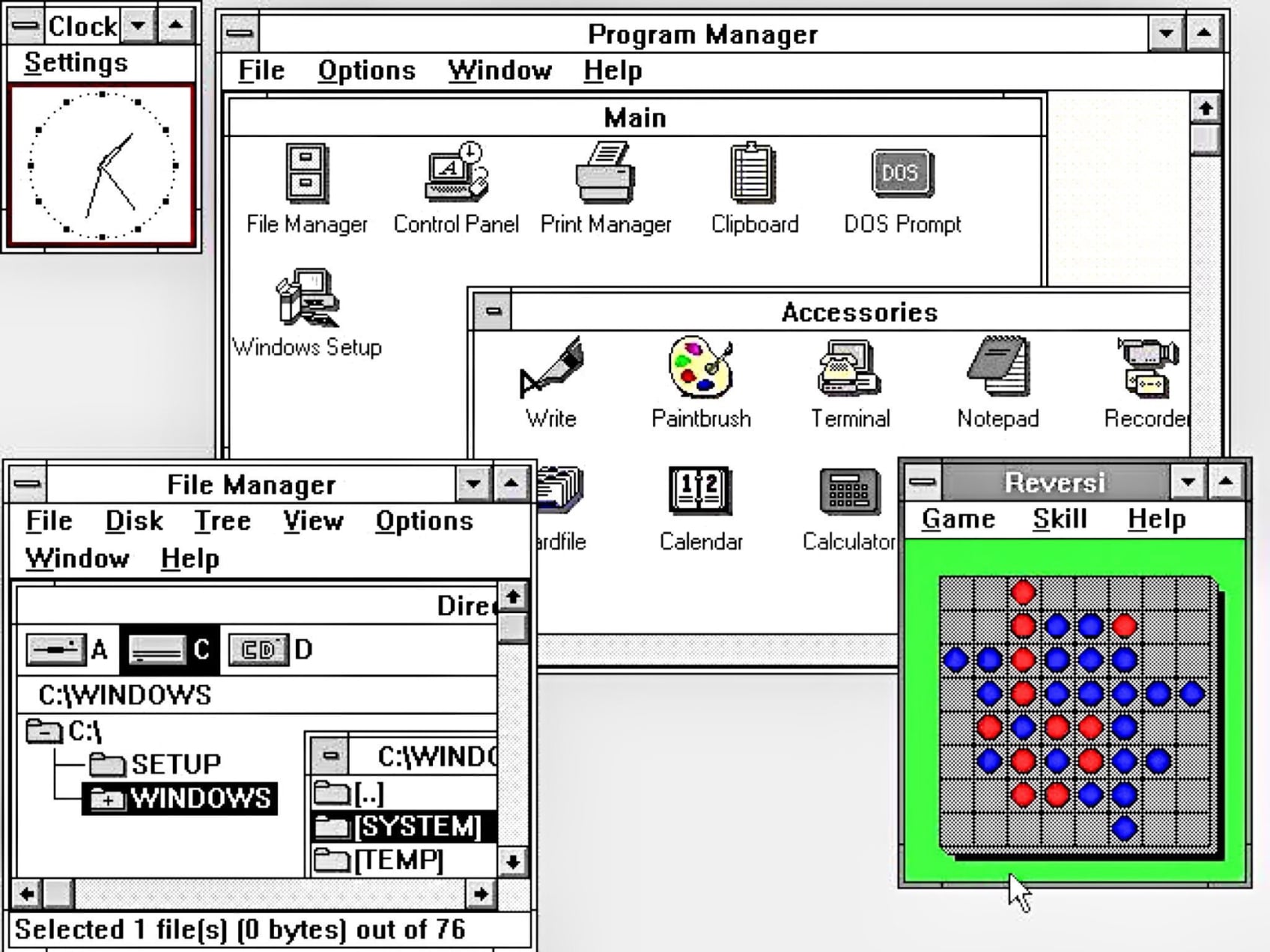
1987, December
OS/2
OS/2 (Operating System/2) is a series of computer operating systems, initially created by Microsoft and IBM under the leadership of IBM software designer Ed Iacobucci. As a result of a feud between the two companies over how to position OS/2 relative to Microsoft's new Windows 3.1 operating environment, the two companies severed the relationship in 1992 and OS/2 development fell to IBM exclusively. The name stands for "Operating System/2", because it was introduced as part of the same generation change release as IBM's "Personal System/2 (PS/2)" line of second-generation personal computers. The first version of OS/2 was released in December 1987 and newer versions were released until December 2001.
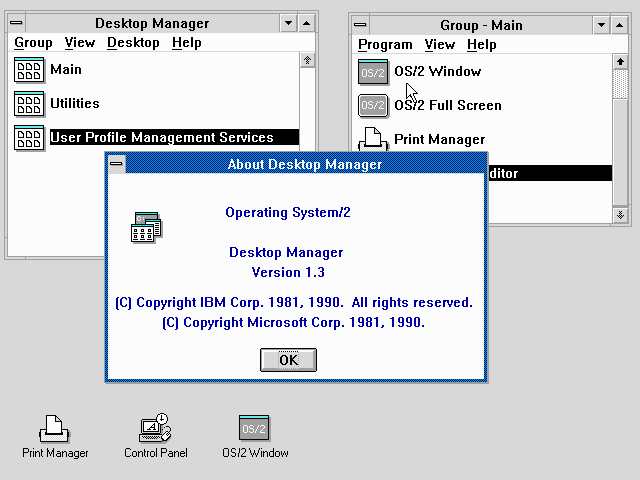
1987, December 9
Windows 2.x
Microsoft Windows version 2.0 (2.01 and 2.03 internally) came out on December 9, 1987 and proved slightly more popular than its predecessor. Much of the popularity for Windows 2.0 came by way of its inclusion as a "run-time version" with Microsoft's new graphical applications, Excel and Word for Windows. They could be run from MS-DOS, executing Windows for the duration of their activity, and closing down Windows upon exit.
Windows 2.1 is a major release of Microsoft Windows. It was released to manufacturing on May 27, 1988, as a successor to Windows 2.0. It was released with two different variants with differing CPU compatibility, also known as Windows/286 and Windows/386, so the versions are considered to be similar to its predecessor. In comparison, the Windows/386 variant is considered to be better than Windows/286, since it provides support for EMS emulation and is designed to use both conventional and extended memory. Changes to the user interface did not occur in this version, and rather, its performance was increased and enhanced memory management was added. The version is also noted to be the first one to require a hard disk drive. A minor update version, Windows 2.11, was released in March 1989.
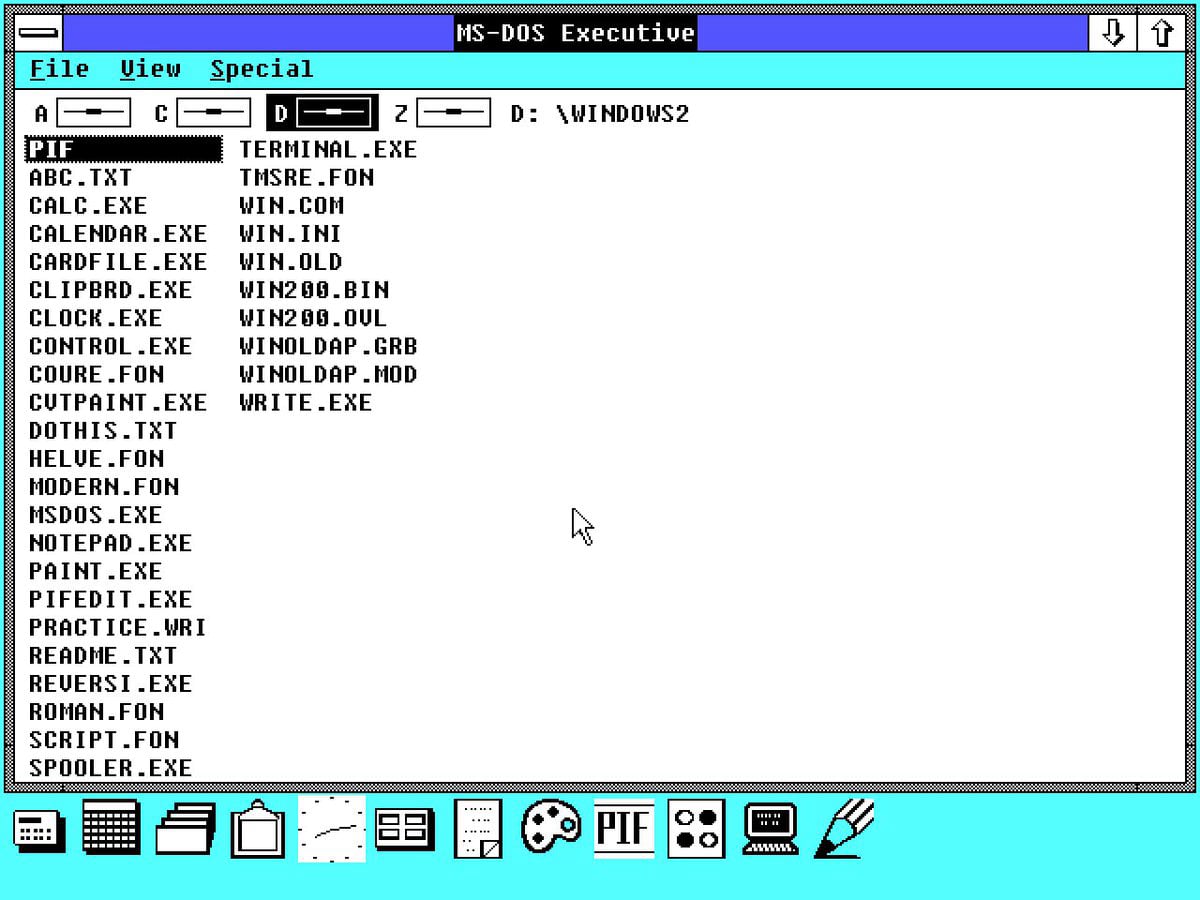
1985, November 20
Windows 1.0
Windows 1.0, the first independent version of Microsoft Windows, version 1.0, released on November 20, 1985, achieved little popularity. The project was briefly codenamed "Interface Manager" before the windowing system was implemented—contrary to popular belief that it was the original name for Windows and Rowland Hanson, the head of marketing at Microsoft, convinced the company that the name Windows would be more appealing to customers.
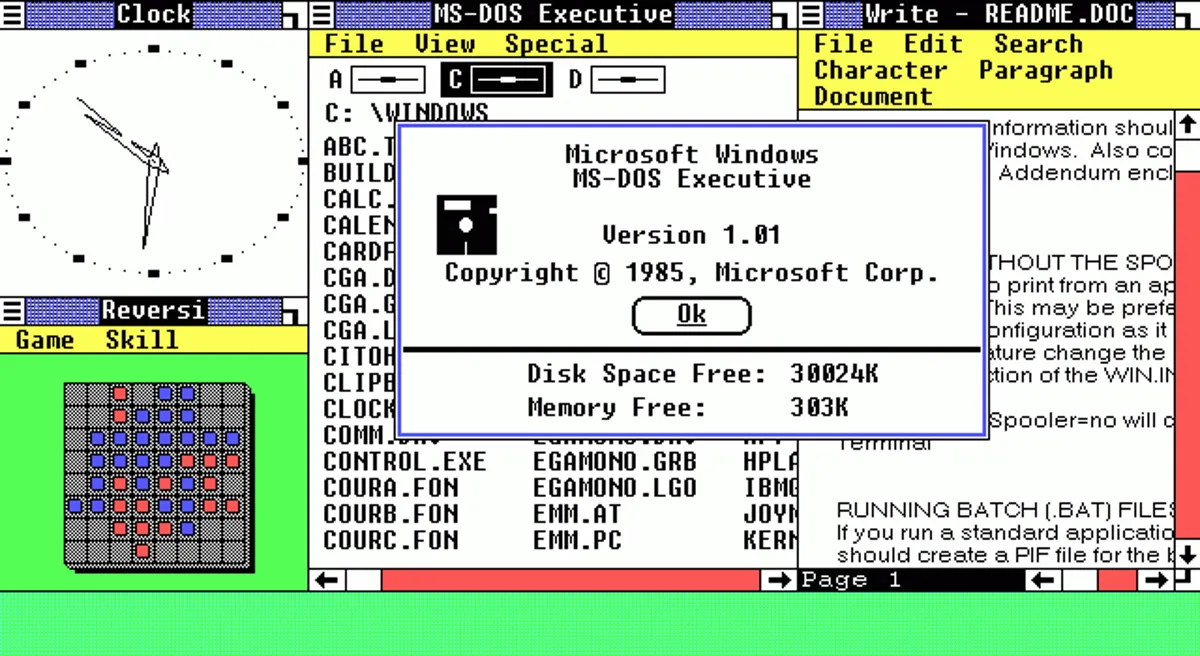
1983, August
Development
Microsoft showed its desire to develop a graphical user interface (GUI) as early as 1981. The development of Windows began after Bill Gates, co-founder of Microsoft and the lead developer of Windows, saw a demonstration at COMDEX 1982 of VisiCorp's Visi On, a GUI software suite for IBM PC compatible computers. A year later, Microsoft learned that Apple's own GUI software—also bit-mapped, and based in part on research from Xerox PARC—was much more advanced; Microsoft decided they needed to differentiate their own offering. In August 1983, Gates recruited Scott A. McGregor, one of the key developers behind PARC's original windowing system, to be the developer team lead for Windows 1.0.
Microsoft first demonstrated a window manager to the press in September 1983. The demonstration featured a user interface similar to Multiplan and other contemporary Microsoft applications with a command bar in the bottom of the screen. It also showed multiple application windows in both overlapping and tiled arrangements. This user interface concept was soon reworked to only support tiled windows and to change the Multiplan-like command bar into a menu bar under each window's title bar. The redesigned environment ultimately had its public debut at Fall COMDEX 1983 in November 1983. Initially requiring 192 KB of RAM and two floppy disk drives, Microsoft described the software as a device driver for MS-DOS 2.0. By supporting cooperative multitasking in tiled windows when using well-behaved applications that only used DOS system calls and permitting non-well-behaved applications to run in a full screen, Windows differed from both Visi On and Apple Computer's Lisa by immediately offering many applications. Unlike Visi On, Windows developers did not need to use Unix to develop IBM PC applications; Microsoft planned to encourage other companies, including competitors, to develop programs for Windows by not requiring a Microsoft user interface in their applications.
Manufacturers of MS-DOS computers such as Compaq, Zenith, and DEC promised to provide support, as did software companies such as Ashton-Tate and Lotus. After previewing Windows, BYTE magazine stated in December 1983 that it "seems to offer remarkable openness, reconfigurability, and transportability as well as modest hardware requirements and pricing … Barring a surprise product introduction from another company, Microsoft Windows will be the first large-scale test of the desktop metaphor in the hands of its intended users." From early in Windows's history, Gates viewed it as Microsoft's future. He told InfoWorld magazine in April 1984 that "our strategies and energies as a company are totally committed to Windows, in the same way that we're committed to operating-system kernels like MS-DOS and Xenix. We're also saying that only applications that take advantage of Windows will be competitive in the long run." IBM was notably absent from Microsoft's announcement, and the corporation rejected Windows in favor of creating its own product called TopView. By late 1984, the press reported a "War of the Windows" between Windows, IBM's TopView, and Digital Research's Graphics Environment Manager (GEM). Steve Ballmer replaced McGregor after he left the team in January 1985.
Microsoft had promised in November 1983 to ship Windows by April 1984, although, due to various design modifications, its release date was delayed. During its development and before its windowing system was developed, it was briefly referred to by the codename "Interface Manager". De-emphasizing multitasking, the company stated that Windows' purpose, unlike that of TopView, was to "turn the computer into a graphics-rich environment" while using less memory. After Microsoft persuaded IBM that the latter needed a GUI, the two companies announced in April 1987 the introduction of OS/2 and its graphical OS/2 Presentation Manager, which were supposed to ultimately replace both MS-DOS and Windows.
